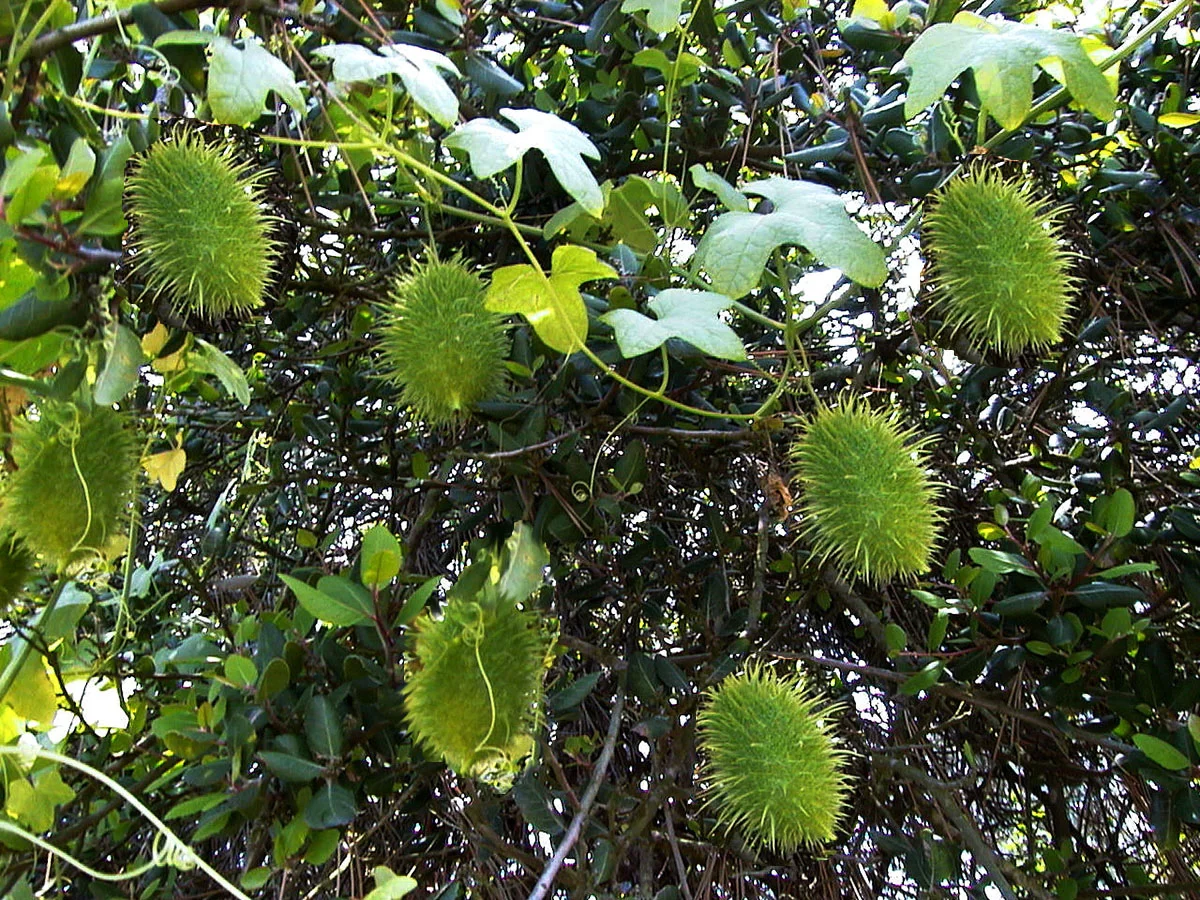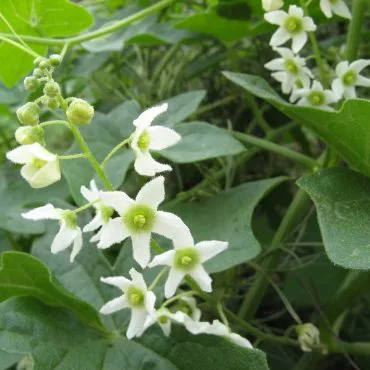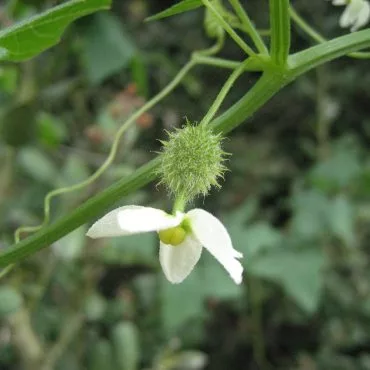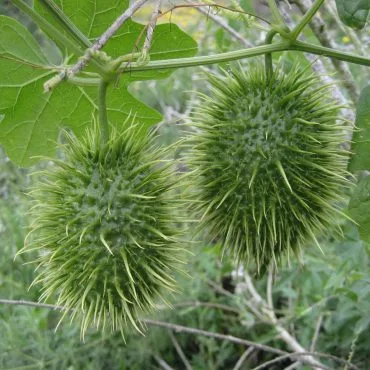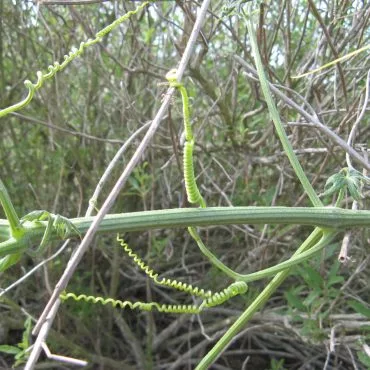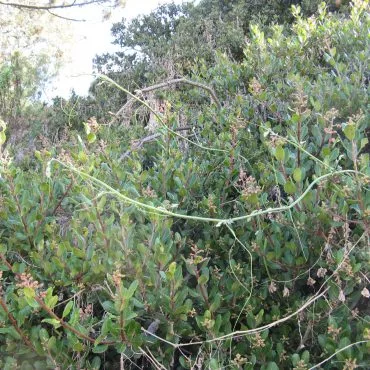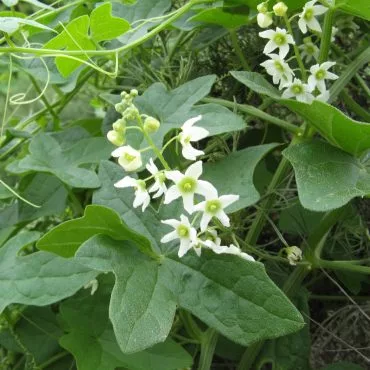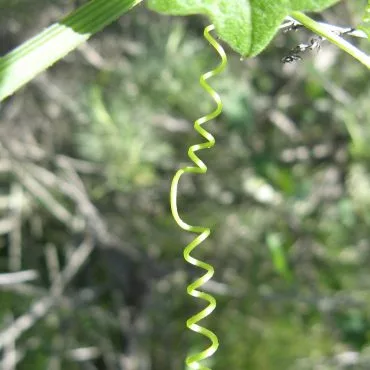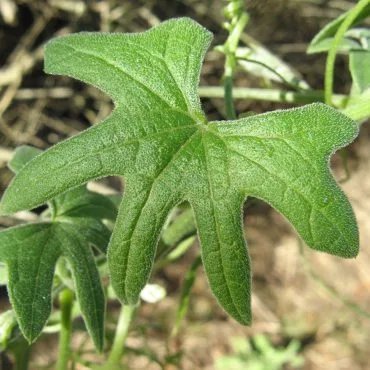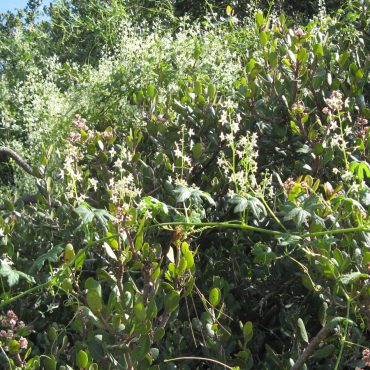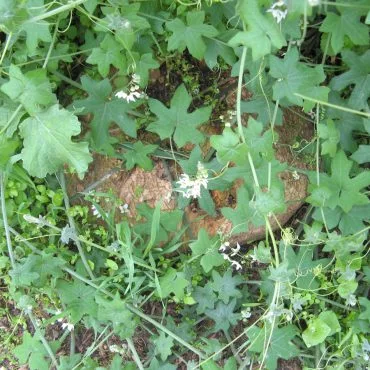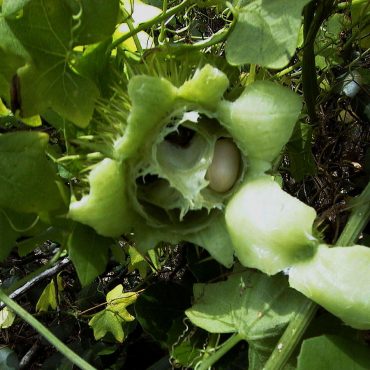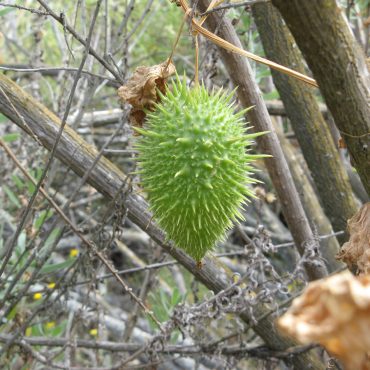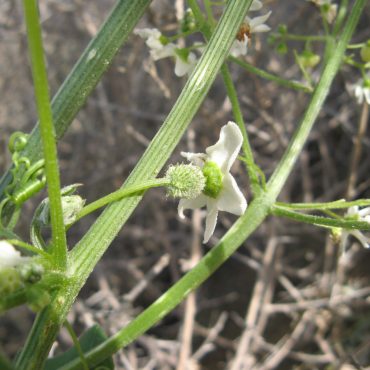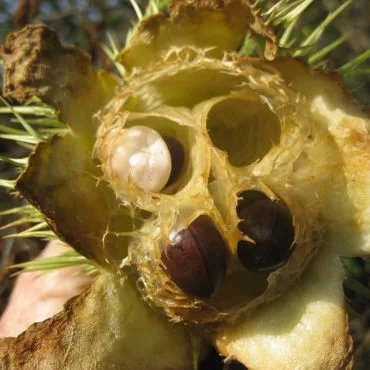Wild cucumber is a long, branching, herbaceous, perennial vine that may reach 25 feet (8 m) in length. One or more viny stems grow from an enormous, fleshy tuber. The vines climb up and over adjacent shrubs, clinging by means of long, coiled tendrils. Leaves are palmately lobed, 2-4 inches (5-10 cm) across, with 5-7 lobes.
Flowers are either male or female; both are found on the same plant. Five to twenty male flowers occur in spikes arising from leaf axils. Male flowers are about a ½ inch (8-13 mm) in diameter. Male flowers begin to appear before the female flowers.4 This helps prevent self-pollination and encourages gene flow between different plants. The female flowers are slightly larger; they occur singly at the base of a male spike. Flowers of both sexes are similar, white to cream, shaped like a shallow cup with five lobes. The ovary is below the female flower, appearing as a spiny, pea-sized sphere below the petals. The major bloom period is December or January through April.1
The fruit is a large, green, spiny ovoid, 1½ to 5 inches long, suspended from the vine. Spines stiffen as fruit ages. Up to 16 large seeds are formed within 4 chambers. When mature, the fruit splits open at the lower end, ejecting up to four seeds from each chamber; the attractive seeds are shiny and brown, about the size of a penny.
Plants have a very short growing season, putting forth shoots with the first winter rains. By February, vines engulf the surrounding shrubs. By mid-summer, the plant has gone dormant, leaving a characteristics tangle of dried stems over surrounding vegetation.

